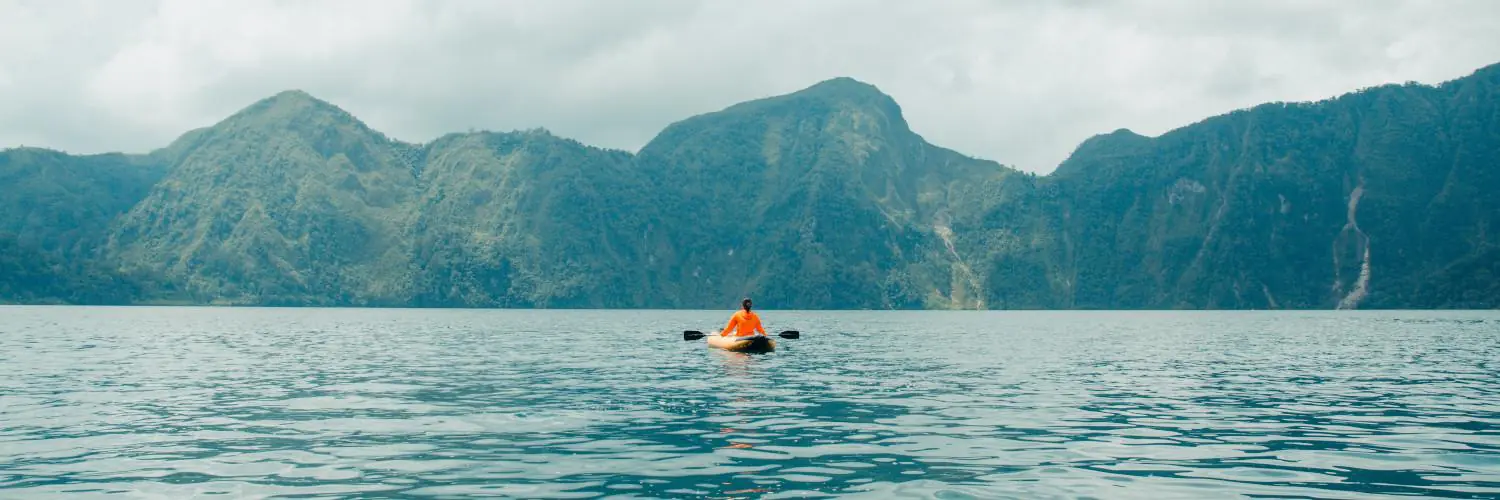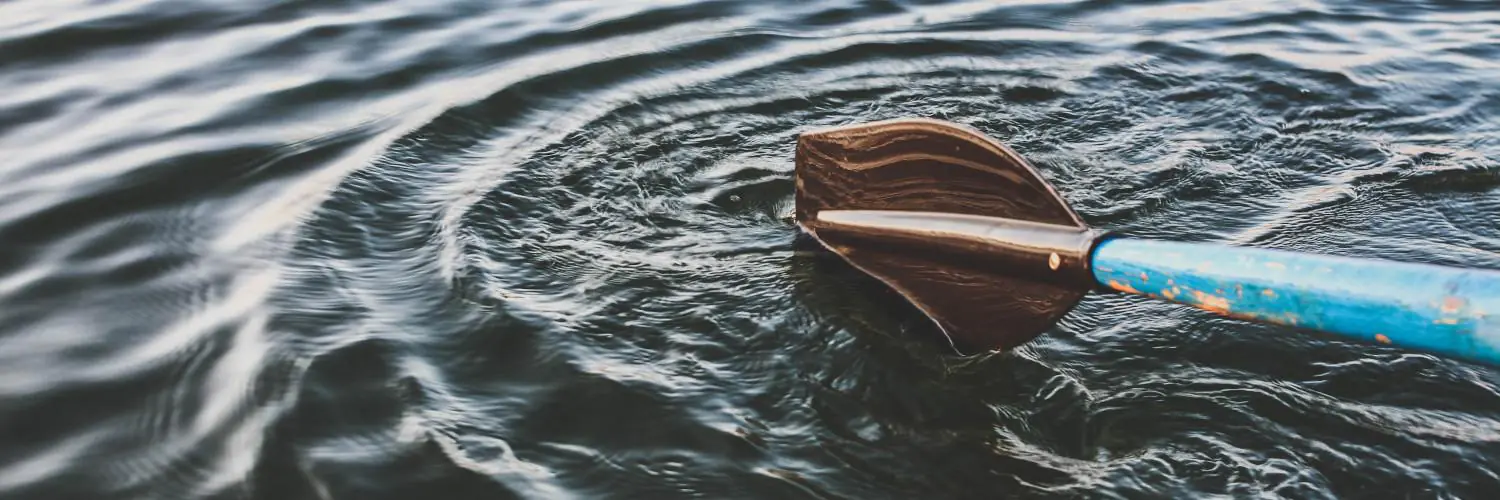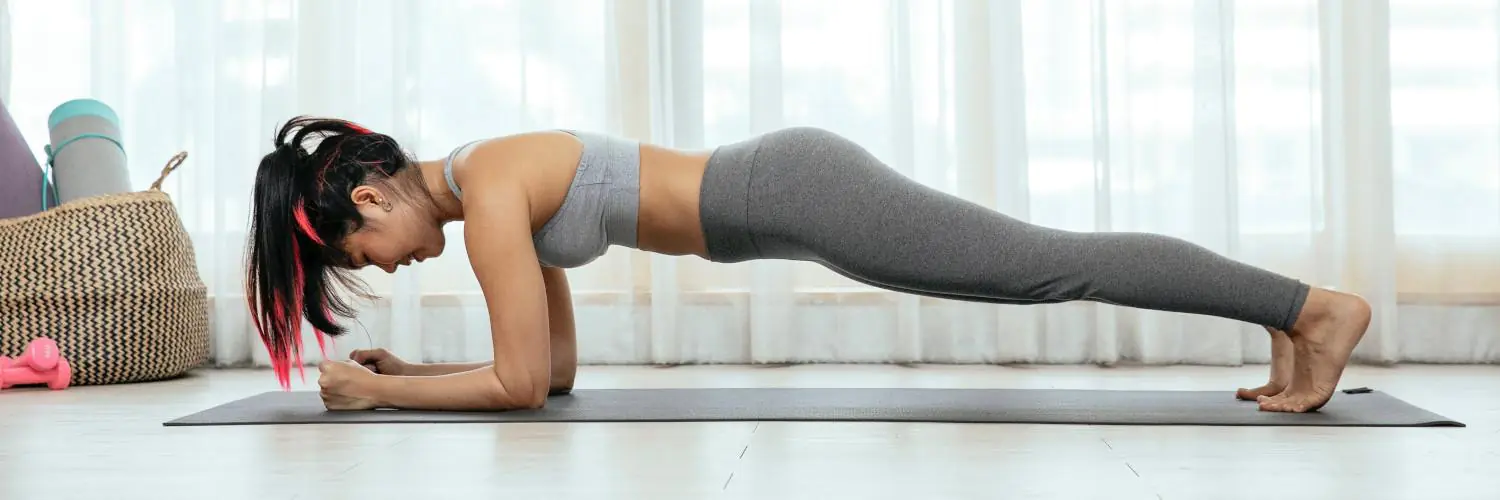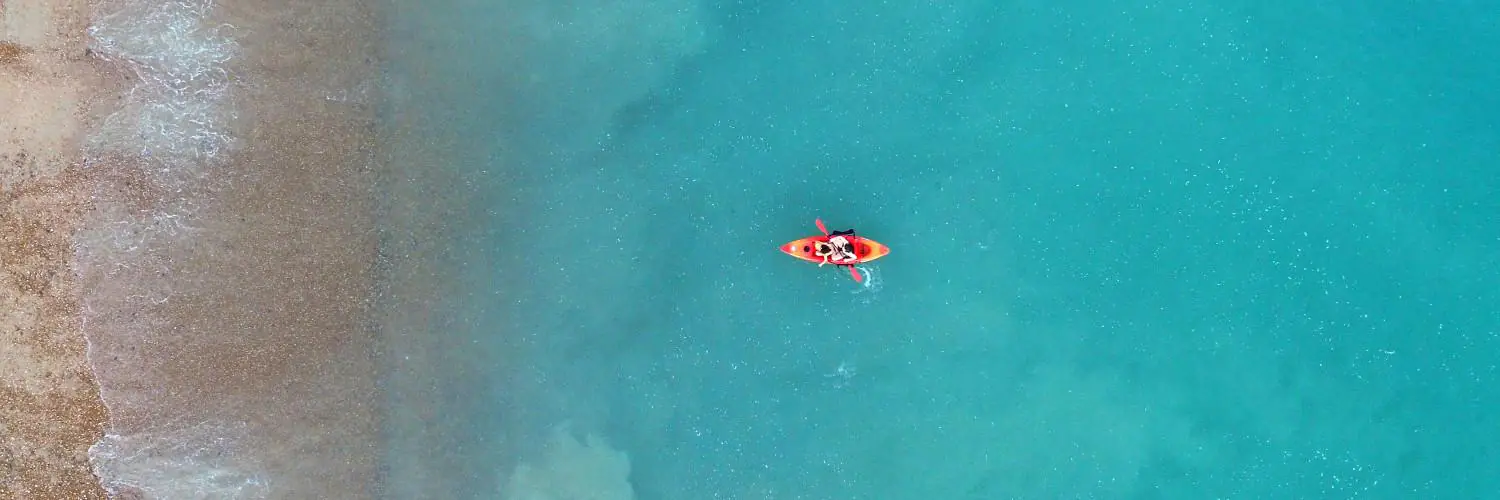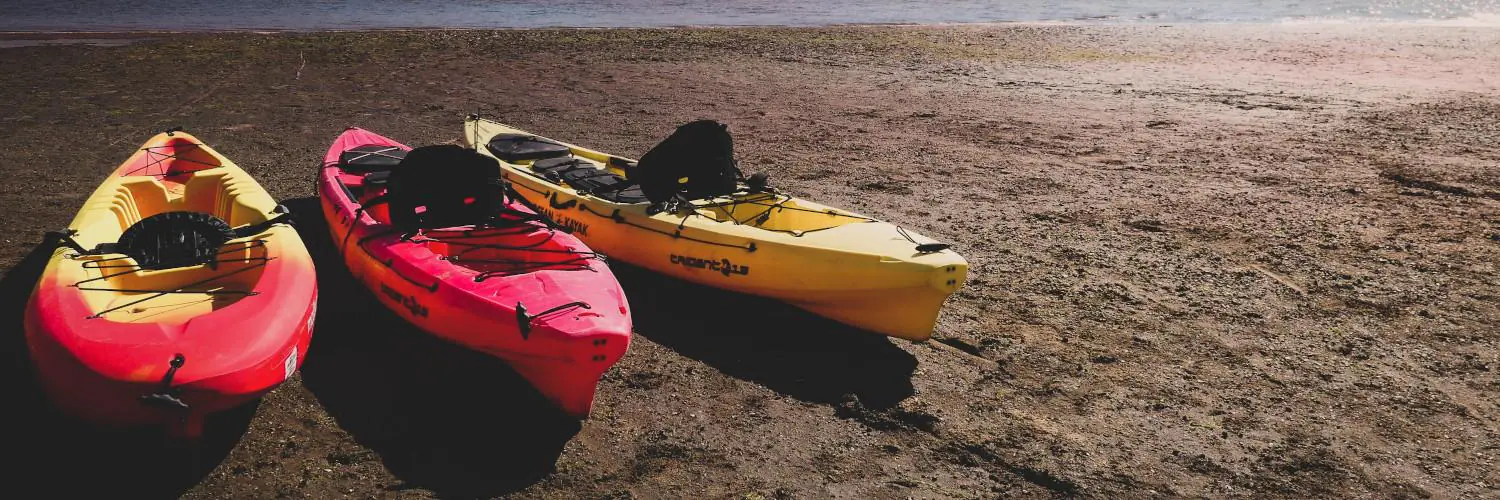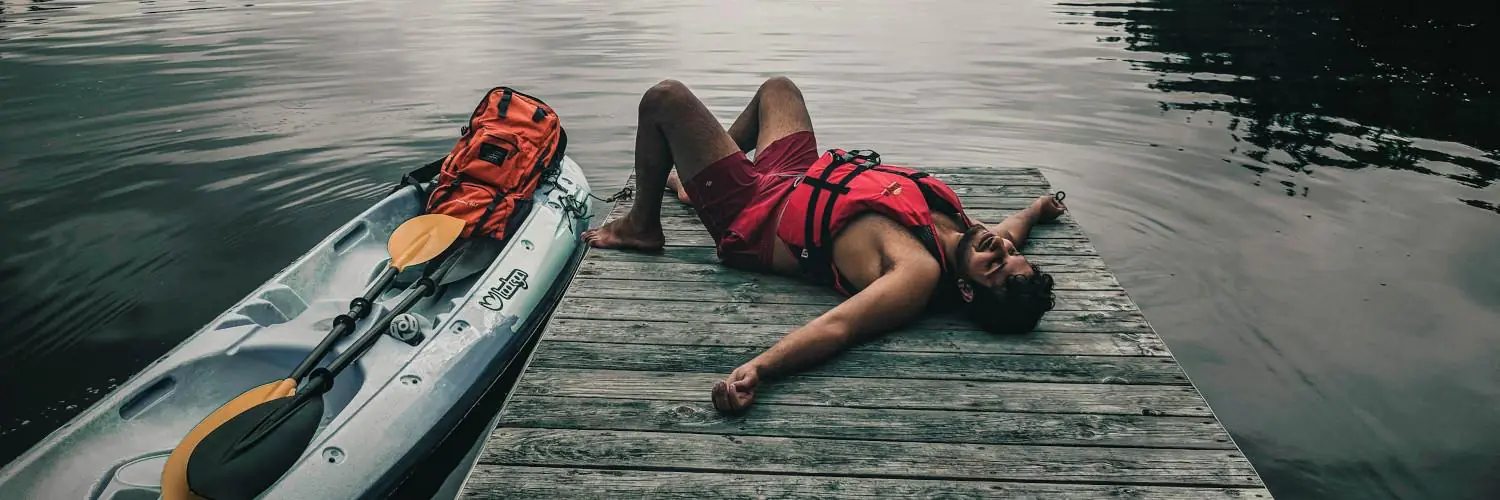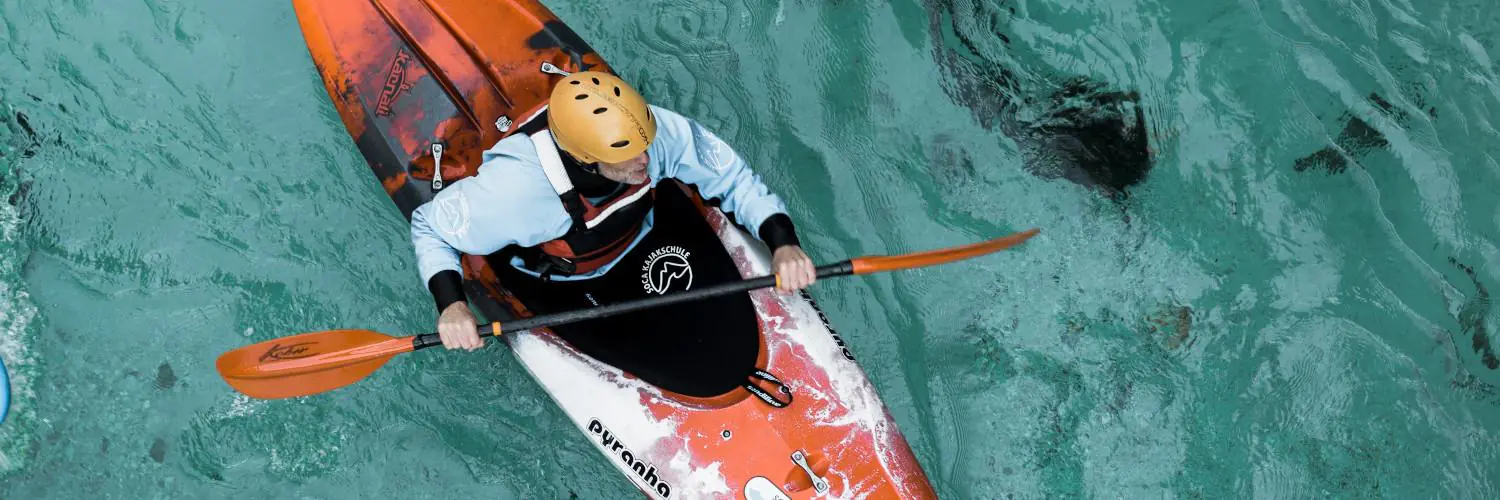Kayaking is a popular water sport that offers both excitement and relaxation. It allows people to explore rivers, lakes, and coastal areas while getting exercise and enjoying nature. Kayaking provides a full-body workout that can improve strength, flexibility, and cardiovascular health.
Like any activity, kayaking has its pros and cons. On the plus side, it’s a low-impact way to stay fit and reduce stress. Kayaking lets paddlers connect with the outdoors and see wildlife up close. It can be done solo or with friends, making it a versatile social or solo activity.
There are some downsides to consider too. Kayaking requires some skill and practice to do safely. Beginners need to learn proper techniques and safety precautions. The sport also needs special equipment like a kayak, paddle, and life jacket, which can be costly. Weather and water conditions can impact kayaking plans and safety as well.
Table of Contents
Physical and Health Benefits of Kayaking
Kayaking offers many physical and mental health perks. It boosts fitness, builds strength, and lifts mood.
Cardiovascular Health and Weight Loss
Kayaking gets your heart pumping. As you paddle, your heart works harder to send blood through your body. This makes your heart stronger over time. A stronger heart lowers the risk of heart disease.
Kayaking also burns calories. A 150-pound person can burn about 340 calories in an hour of kayaking. This helps with weight loss when paired with a healthy diet. The steady, low-impact nature of kayaking makes it easier on joints than high-impact sports.
To maximize weight loss, aim for longer kayaking sessions. Pair this with a balanced diet for best results.
Muscle Strengthening and Flexibility
Kayaking works many muscles at once. It targets arms, shoulders, back, and chest. Core muscles get a workout too, as they help keep you stable in the kayak.
Repeated paddling motions build strength over time. This can improve posture and reduce back pain. The twisting motion used in kayaking also boosts flexibility in your torso.
Leg muscles get some work too. They help steer the kayak and keep you balanced. For a full-body workout, try different kayaking strokes and speeds.
Mental Health and Stress Reduction
Being on the water can calm the mind. The rhythmic motion of paddling often puts people in a peaceful state. This can lower stress and anxiety levels.
Kayaking in nature adds to these benefits. Fresh air and scenic views boost mood. The focus needed for kayaking can also act as a form of mindfulness. This helps clear the mind of worries.
Exercise itself releases feel-good chemicals in the brain. These endorphins can improve mood and energy levels. Regular kayaking may help fight depression and boost self-esteem.
Different Kayak Types and Purposes
Kayaks come in many shapes and sizes to suit various activities and skill levels. The two main categories are sit-in and sit-on-top kayaks. Each type has unique features for specific water conditions and paddling styles.
Recreational Vs. Touring Kayaks
Recreational kayaks are great for beginners. They’re stable, easy to maneuver, and work well on calm lakes and slow-moving rivers. These kayaks are usually shorter and wider, making them more stable but slower.
Touring kayaks are longer and narrower. They’re built for speed and tracking in a straight line. These kayaks are ideal for longer trips on open water. They often have more storage space for gear and supplies.
Sit-on-top kayaks are popular for both recreational and touring use. They’re easy to get on and off, making them good for warm weather and beginners. Sit-in kayaks offer more protection from the elements and better control in rough water.
Specialty Kayaks for Specific Activities
Fishing kayaks have special features for anglers. These may include rod holders, tackle storage, and even live wells. Some fishing kayaks have pedal-driven propulsion systems, letting anglers move while keeping their hands free for fishing.
Whitewater kayaks are short and highly maneuverable. They’re designed to handle fast-moving rivers and rapids. These kayaks come in different styles for various skill levels and types of whitewater.
Inflatable kayaks are portable and easy to store. They’re a good choice for people with limited storage space. While not as fast as hard-shell kayaks, many inflatable models are sturdy and suitable for a range of water conditions.
Tandem kayaks are made for two paddlers. They’re great for couples or families who want to kayak together. These kayaks are often more stable but can be harder to maneuver than single-person kayaks.
Considerations for Storage and Transport
Kayak storage and transport require careful planning. Proper methods protect your kayak and make it easier to use.
For storage, wall-mounted racks save floor space. Freestanding racks work well in garages or sheds. Always store kayaks indoors to avoid sun and weather damage.
Transporting kayaks safely is key. Roof racks are popular for most vehicles. Foam blocks offer a budget-friendly option for shorter trips.
Common transport methods:
- Roof racks
- Foam blocks
- Trailers
- Truck beds
Choose based on your vehicle type and kayak size. Secure tie-downs are essential for all methods.
Inflatable kayaks offer unique benefits. They pack down small for easy storage and transport. This makes them great for apartments or small cars.
Remember to clean and dry your kayak before storing. This prevents mold and extends its lifespan.
For frequent paddling, easy access is important. Consider a storage spot near your vehicle or water source.
Learning Curve and Accessibility
Kayaking has a learning curve that varies depending on the type of kayak and water conditions. Beginners can start with calm lakes or slow-moving rivers to build skills gradually.
Sit-on-top kayaks offer an easier entry point for new paddlers. Their open design allows quick recovery if tipped over. Sit-inside kayaks take more practice but provide better control in rougher waters.
Basic paddling techniques can be learned in a few hours. Mastering more advanced skills like rolling takes longer. Many kayakers keep improving their abilities over years of practice.
Kayaks come in different sizes and styles to fit various body types and skill levels. This makes the sport accessible to a wide range of people. Lightweight and inflatable models are easy to transport and store.
Many areas offer kayak rentals and guided trips. This lets newcomers try kayaking without a big investment. Local clubs and classes can help speed up the learning process.
Kayaking can be enjoyed in many settings:
- Lakes
- Rivers
- Coastal areas
- Ponds
This variety of options makes it easier for people to find suitable places to kayak near them.
Challenges and Precautions
Kayaking comes with some risks and demands careful planning. Paddlers need to be aware of the physical effort needed and stay safe on the water. Weather and other factors can also affect kayaking trips.
Physical Effort and Safety
Kayaking is a workout. It takes strength and stamina to paddle for long periods. Beginners may feel sore arms and back muscles after trips. Good technique helps reduce strain.
Safety gear is a must. Life jackets should always be worn. Helmets are needed for whitewater kayaking. A whistle and first aid kit are smart to bring along.
Capsizing is a risk. Kayakers need to know how to right their boat and get back in. Practice this skill in calm, shallow water first. Taking a safety class is a good idea for new paddlers.
Environmental Factors
Weather can change quickly on the water. Check forecasts before heading out. Strong winds make paddling harder and can push kayaks off course. Storms bring lightning risks.
Sun exposure is another concern. Sunburn and heat exhaustion can happen on long trips. Wear sunscreen, a hat, and bring plenty of water.
Water temperature matters too. Cold water can cause hypothermia, even on warm days. Dress for the water temperature, not the air. Wear a wetsuit if needed.
Currents and tides affect sea kayaking. Learn to read tide charts and sea conditions. Rivers have their own hazards like rapids and hidden rocks. Know your skill level and the difficulty of the water you plan to paddle.

